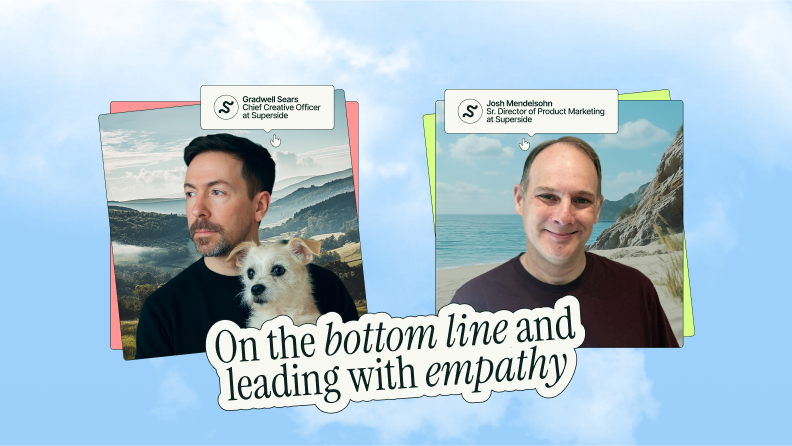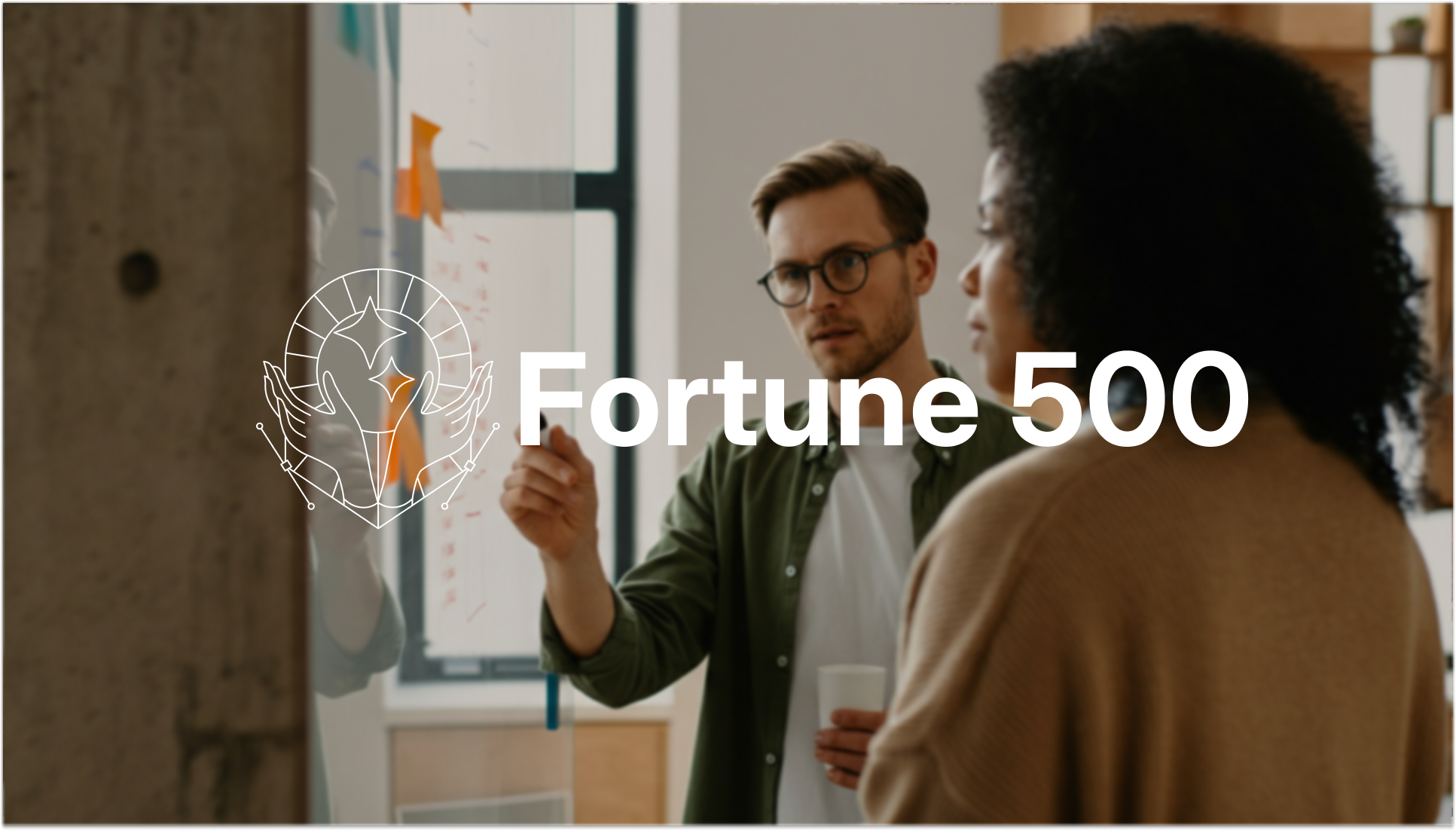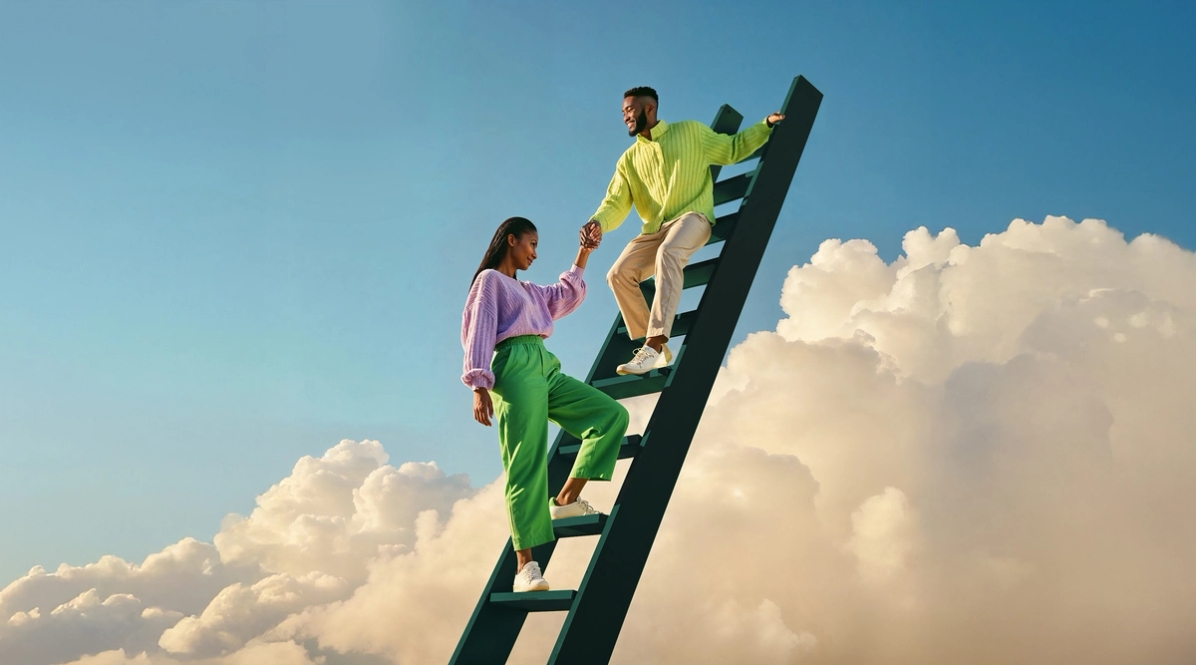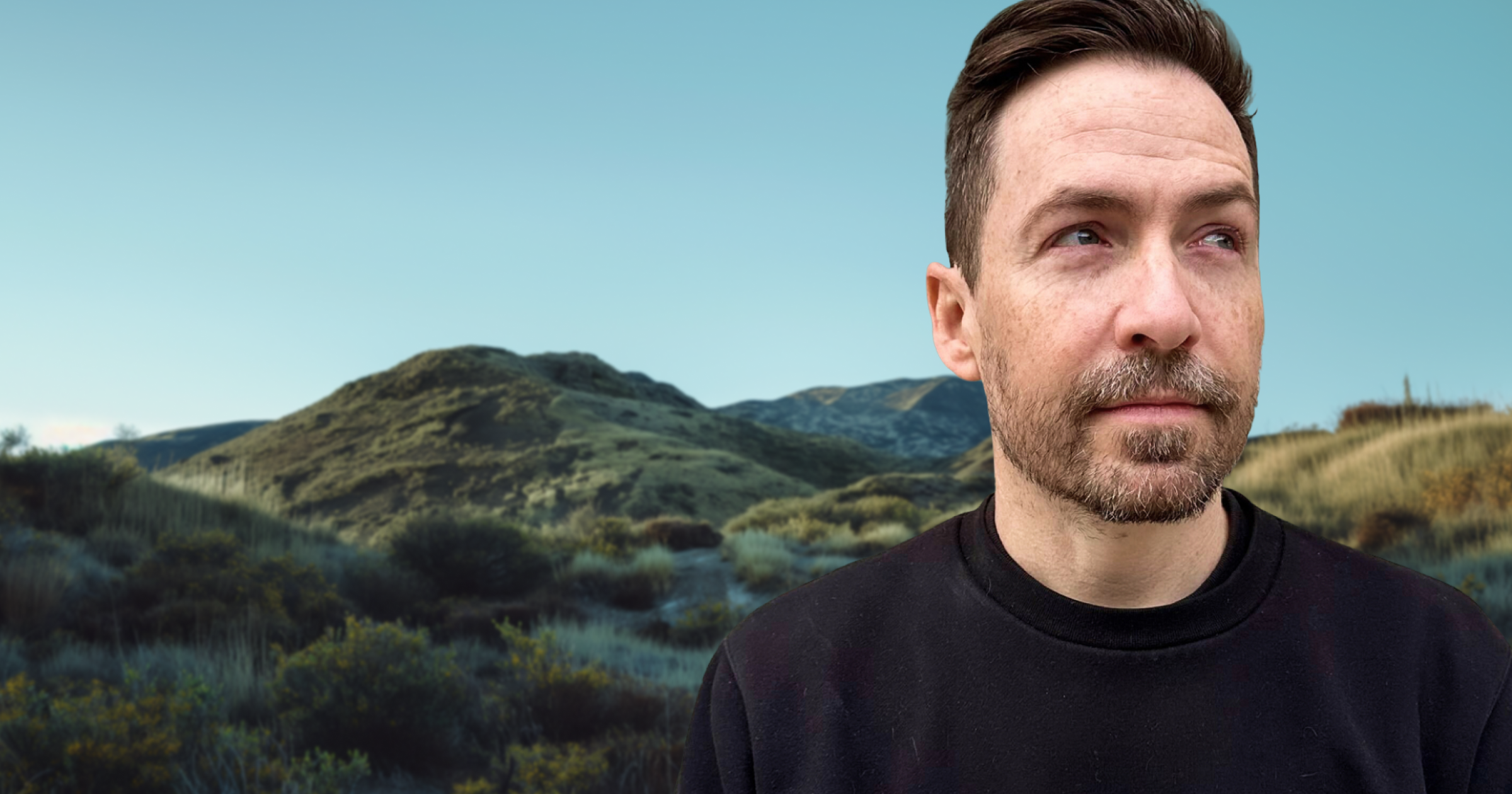
Great creative hits hearts and targets. Superside’s leaders show how balancing creative empathy with performance metrics drives brand equity—and business results.
Creative impact can’t be captured by a single metric or mood.
But it is visible in results—and few understand this balance better than Superside's Gradwell Sears, Chief Creative Officer, and Josh Mendelsohn, Senior Director of Product Marketing.
In our latest guide, Inside Great Creative Partnerships, Sears and Mendelsohn discussed how creative and marketing leaders must harmonize emotional resonance with measurable business performance to drive real impact.
Spoiler: Results matter, but so do the people behind them. From ROI to vibes and empathy to partnerships that thrive, keep reading to see:
- Why creative is foundational to performance
- How to make empathy a competitive advantage
- How to prioritize the humans behind the results
- What balancing speed with substance looks like
- Why unity is essential for proving impact
Together, Sears and Mendelsohn offer a real-world look at what it takes to lead with both heart and rigor—and why that balance is the key to creative that works.
The ROI of great creative
Mendelsohn focuses on data-backed outcomes—whether it’s new leads, downloads or cost per acquisition. But as he acknowledges, he can’t reach those results without great creative.
It’s literally impossible to optimize things like return on ad spend or cost of acquisition without a steady flow of creative to test and learn along the way.

That belief is backed by hard numbers: According to a Forrester Total Economic Impact™ study, by providing highly creative and innovative content in a fast, timely manner, Superside improved campaign performance by $1.1 million over the course of three years. Additionally, Superside’s creative services delivered a 94% ROI—translating to more than $2 million in net value.
This is the marketer’s business case for creative: It’s not optional. It’s foundational to performance. Without it, the machine stalls.
Sears, by contrast, begins with the emotional imprint of creativity. “Creative impact tends to be something that makes you feel something... that prompts an action. That’s what great creative can do,” he said. From impulse buys to iconic campaigns that stay with you for years, Sears champions creativity that isn’t art, but should have a similar vibe.
The longevity of great creative may not show up in immediate ROI… but it’s what turns a bar of soap into something aspirational. That’s the power of brand.

These long-tail effects are often overlooked in quarterly marketing reviews—but they’re the bedrock of brand equity. It’s what makes someone skip over competitors and go straight to your product because they feel something when they see it.
Empathy as a competitive advantage
Empathy isn’t soft. It’s strategic. For both leaders, it’s the secret to aligning marketing and creative priorities and building a partnership that thrives—even under pressure.
I have a sticky note on my desk that says: ‘That's not how I would do it. But that doesn't make it a bad idea.'

This mindset is core to Mendelsohn’s philosophy. Leading with empathy, in his view, means making space for ideas that might not be your own, being flexible on arbitrary deadlines and protecting creative teams from performance pressure.
Sears takes a dual approach—empathy toward team members and empathy toward his audience. He emphasizes understanding what motivates creatives on a human level: “What’s making them excited about this opportunity?” Equally important, he says, is reducing ambiguity in briefs.
Sometimes you get a brief with 15 priorities, which means nothing is.

Lack of prioritization is not a hypothetical concern. In Superside’s Overcommitted Report, creative leaders disclosed that 55% of projects are marked high priority, making it difficult to know where to start. With 76% also experiencing burnout, transparency and protection from scope creep is vital for sustainable creative work.
Managing expectations, particularly in fast-turn environments, prevents burnout and disappointment. Empathy becomes a bridge—between urgency and inspiration, between short-term performance and long-term brand love.
Results matter—but so does the human behind them
Mendelsohn didn’t sugarcoat it: “If you’re kind but don’t deliver results, you're not going to have a job for long.” But he also warned against transferring that pressure to creatives, especially when their strengths lie in storytelling and craft.
When you pass that pressure onto creative teams… it can deliver worse work because it comes from a place of fear rather than inspiration.

The answer? Clear communication, role clarity and shielding creative teams from the metrics heat when needed. Sears echoed this sentiment, pointing to the importance of transparency: “Let them know upfront—this one is two rounds, the templates are there, we just need to get it done.”
Sears also highlighted that while reducing internal friction, clear communication and prioritization is essential to creativity, not every project will be a home run and that’s ok.
Failure isn’t necessarily the worst thing. Most of the time, failure is where you learn the most.

Balancing speed with substance
A recurring tension for creative and marketing leaders is reconciling short-term performance needs with long-term brand equity. For Sears, it’s about recognizing when to swing for the fences and when to take a step back. “This isn’t the one,” he tells his teams sometimes, helping them conserve energy and creative ambition for the right moments.
Mendelsohn offered a complementary take: Even performance marketing must reflect the brand’s emotional core.
The most successful brands are doing both at the same time—performance and brand—through a consistent feeling that permeates everything that gets into market.

Whether you’re running a single email campaign or producing a full-funnel campaign, that consistency is what turns creative volume into brand value.
Where to start: Proving impact with unity
So, what should a creative or marketer do when they’re struggling to prove impact?
Josh’s advice: Tell a unified story.
You need to be accountable for it. When you're explaining your programs and their impact to stakeholders and executives… bring both the marketer and creative together. It has to be a united front.

Start with the why. Translate campaign goals, align on both emotion and action and walk into stakeholder meetings shoulder-to-shoulder.
Gradwell closed on a note of humility and curiosity:
If you're getting it right every time, you're not trying hard enough.

Creative leadership that delivers
Ultimately, creative and marketing leaders aren’t working on opposite sides of a campaign—they’re building two halves of the same story. One half sparks attention, emotion and memory. The other ensures that spark fuels measurable outcomes.
What unites both? Empathy, clarity, and a deep respect for each other’s craft.
As Sears and Mendelsohn show, results don’t have to come at the cost of creativity—and creativity doesn’t need to abandon structure to make an impact. When both sides lead with curiosity, communicate openly and stay anchored in shared goals, the work gets better. And so do the outcomes.
For more insights on bringing together creatives and marketers to make an impact, be sure to check out our full guide, Inside Great Creative Partnerships.














